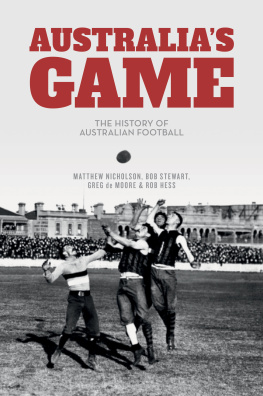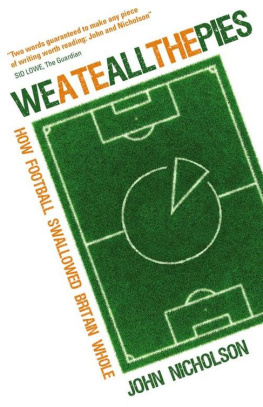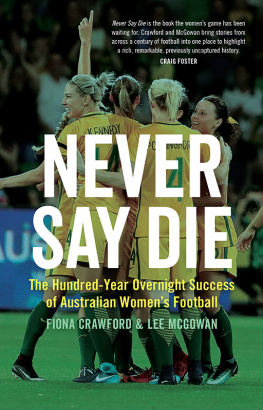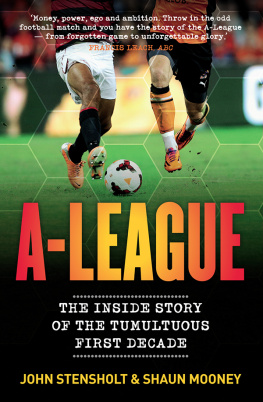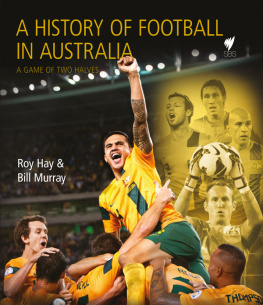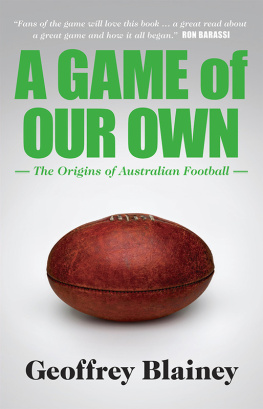
| ABC | Australian Broadcasting Commission |
| ACT | Australian Capital Territory |
| ACC | Australian Crime Commission |
| AFC | Australasian Football Council |
| AFL | Australian Football League |
| AFLPA | Australian Football League Players Association |
| AFLW | Australian Football League Womens |
| ANFC | Australian National Football Council |
| ASF | Australian Soccer Federation |
| ASADA | Australian Sports Anti-Doping Authority |
| CAS | Court of Arbitration for Sport |
| CBA | Collective Bargaining Agreement |
| CEO | Chief Executive Officer |
| DFL | Darwin Football League |
| GCAFL | Gold Coast Australian Football League |
| GWS | Greater Western Sydney |
| IOC | International Olympic Committee |
| IPL | Indian Pacific Limited |
| KSAS | Keep South at South |
| MAFA | Metropolitan Amateur Football Association |
| MBCC | Marylebone Cricket Club |
| MCC | Melbourne Cricket Club |
| MCG | Melbourne Cricket Ground |
| MOGOC | Melbourne Olympic Games Organising Committee |
| NFL | National Football League |
| NRL | National Rugby League |
| NSL | National Soccer League |
| NSW | New South Wales |
| NSWFA | New South Wales Football Association |
| NSWFL | New South Wales Football League |
| NSWRL | New South Wales Rugby League |
| NTFL | Northern Territory Football League |
| PBL | Publishing and Broadcasting Limited |
| POW | Prisoners of War |
| QAFL | Queensland Australian Football League |
| QFA | Queensland Football Association |
| QFL | Queensland Football League |
| RSL | Returned Services League |
| SAFA | South Australian Football Association |
| SAFL | South Australian Football League |
| SCG | Sydney Cricket Ground |
| SRFU | Sydney Rugby Football Union |
| TFL | Tasmanian Football League |
| USA | United States of America |
| VAFA | Victorian Amateur Football Association |
| VCAT | Victorian Civil and Administrative Tribunal |
| VFA | Victorian Football Association |
| VFL | Victorian Football League |
| VFC | Victorian Footballers Club |
| VFLPA | Victorian Football League Players Association |
| VWFL | Victorian Womens Football League |
| WADA | World Anti-Doping Agency |
| WAFA | West Australian Football Association |
| WAFL | Western Australian Football League |
| WANFL | Western Australian National Football League |
| WADA | World Anti-Doping Agency |
| WAWFL | Western Australian Womens Football League |
| YMCA | Young Mens Christian Association |

ACTION: East Fremantle and South Fremantle players in a contest at the Fremantle Oval, 1910. Although the guernseys were similar, East Fremantle wore blue hoops and South red.
WAFL Collection
Australias Game is based on almost 25 years of research and the collective effort of four historians of the game of Australian football. Our hope is that this book serves as a celebration of the game and the contribution it has made to Australian society over more than 160 years. It is a remarkable story, of how a game created not long after the white settlement of Melbourne found its way into nearly every nook and cranny of Australian life. Australian football resonates so strongly because it was invented by Australians for Australians. Unlike every other sport that has captured the nations interest, Australian football is not a copy, a clone, or a hand-me-down of European culture. Rather, it is a game with special qualities, which arose from a distinctive series of events in the fledgling colony of Victoria, grew rapidly, and is now the most dominant sport in the country: a social, commercial, cultural andfor manyspiritual force.
The game of Australian football has grown from strength to strength because, for much of its history, it has traversed class, race and occupational divides. From its beginnings it has also provided more space for womenfirstly as spectators and club stalwarts and then as participantsthan any other football code in the world. This is not to suggest that the evolution of Australian football has been smooth; in many respects it has been the exact opposite.
In the battle for the hearts and minds of Melburnians, then Victorians, and eventually Australians, one of Australian footballs greatest strengths has been its capacity to organise and govern itself, through its clubs, leagues and associations. Australian footballs successes did not often happen by chance but have been the result of hard work and decisive action by the games governing bodies, underpinned by a vision, clearly espoused from the beginning, to make it Australias national game. At times of its greatest prosperity, Australian footballs formal administrative structures, at the state and national level, were strong and robust. At times of crisis, these same structures appeared as if they would break apart as the self-interest of clubs, particularly in the dominant state of Victoria, threatened to leave the games national ambitions in tatters.
Through these ebbs and flows, Australian football has had one important constantan unmatched ability to attract a crowd. These barrackers, tied to their clubs by tribal loyalties, have become the bedrock upon which the game has become the most popular, wealthiest and most visible sport in the nation. The four authors of this book are also unapologetic fans of the game. This is not to say that we have adopted an uncritical approach to its history, far from it. Rather, we too are inextricably drawn to the game, its aesthetic beauty and its inherent tribalism. Through this book we hope to have contributed to a richer understanding of the Australian game of football.
Matthew Nicholson, Bob Stewart, Greg de Moore and Rob Hess June 2021
The starting point for the story of Australias Game is the establishment of Melbourne in the 1830s, and its development over the next 25 years. Before its founding, the site that would eventually become the city of Melbourne had experienced more than 60,000 years of continuous human habitation, despite massive climatic changes and volcanic eruptions.
During its early days, Melbourne was just a small town,
Sporting activities were also prominent. The first horse-race meeting was held in March 1838 on Batmans Hill (now the site of Southern Cross Station), while the first meeting at the Saltwater river flats (now Flemington racecourse) took place just two years later in 1840. Cricket matches, having been played in NSW from the earliest years of the colony, were played at several sites around the Port Phillip settlement, and the Melbourne Cricket Club (MCC) was formed in 1838, just three years after settlement.
Next page
